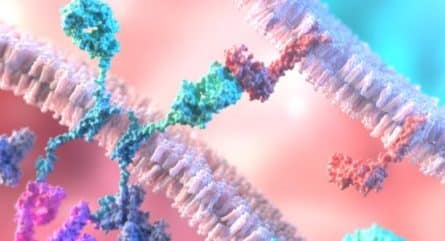The takeaway: What is new in the world of PCR, qPCR, and genomics research? Lots, actually.
Quantitative polymerase chain reaction, or qPCR, is an enhanced method of standard polymerase chain reaction (PCR). Quantitative PCR has been called the “gold standard” for virus identification thanks to its fast analysis and great precision. Applications are primarily focused on gene expression, which makes qPCR a powerful tool for research across the spectrum of biology, all the way up to translational medicine. Other applications include genetic variation analysis, non-coding RNA analysis, mutation detection, protein expression, and microbe detection.
The usefulness of qPCR means it is a key component of numerous recent studies and articles. We have summarized a few of them here.
PCR market poised for strong growth
According to Adroit Market Research, as reported by Yahoo! Finance, the qPCR and real-time PCR (rtPCR) market is being boosted by growing global prevalence of infectious diseases and an uptick in the ubiquity of genetic disorders, as well as an increase in the number of diagnostic facilities and hospitals.
Overall, the qPCR and rtPCR market was estimated at a current value of $5.2 billion and is expected to grow at a compound annual growth rate of 8.73% through 2030, when it will reach $10.8 billion. Future growth will be dependent on the technology’s ability to help research cancer and tumors, conduct prenatal diagnoses, and facilitate gene expression studies. North America currently has about 57 percent of the market, while the high prevalence of chronic and infectious diseases in the Asia-Pacific region will ensure fast growth there.
SARS-CoV-2 detection with a two-step RT-qPCR test
The standard detection method for SARS-CoV-2 during the COVID-19 pandemic has hinged on a one-step RT-qPCR method, which requires specific probes and reagents. Researchers in Iran recently sought a cost-effective technique based on SYBR green. SYBR green is an intercalating dye that does not emit fluorescence until it binds to a double-stranded DNA, or until the amount of fluorescence is proportional to the relative amount of PCR amplicons that are present after extension.
Writing in BMC Infectious Diseases, the Iranian team found that the two-step method detected up to six dilutions of the SARS-CoV-2 samples and did not amplify any of the positive samples of other respiratory viruses.
“Our findings indicated that the two-step method has comparable sensitivity and specificity to the one-step method,” researchers wrote. “Therefore, this method can be considered a potential diagnostic method for diagnosing and monitoring COVID-19 patients. It suggests that when the one-step RT-qPCR method is not available, the two-step RT-qPCR can be used to identify SARS-CoV-2.”
COVID-19 proved their worth, but the benefits of PCR-based molecular diagnostics does not stop there
In vitro diagnostics, or IVD, is a term that covers tests conducted on blood or tissue samples to detect diseases, determine how well a treatment works, and monitor health. IVD proved to be valuable in point-of-care molecular diagnostic tests during the COVID-19 pandemic, and now molecular IVDs are seeing applications in everything from oncology and hematology to clinical chemistry and custom precision medicine interventions.
As described in Genetic Engineering & Biotechnology News, Anjali A. Sarkar, PhD, pointed out a number of benefits of PCR-based molecular diagnostics, including:
-
PCR-based diagnostics offer advantages such as better speed, analysis, precision, multiplexing, and inclusion in automated workflows
-
Semi-quantitative PCR can determine if a gene is upregulated or downregulated in the presence of a stimulus
-
Quantitative PCR shows the increase in nucleic acid amplification over time and can be used to detect pathogens and in gene expression analysis
-
While qPCR has limited multiplexing capabilities, it also has shorter workflows when compared to other molecular diagnostic techniques, including in situ hybridization.
Breeding rust-resistant oats
Oats are a prominent food around the world and they are good for you—these whole grain goodies help lower cholesterol levels, protect against skin irritation and, ahem, keep you regular.
But globally, growing oats can be tricky, as the plants can succumb to rust diseases caused by a group of fungi. While fungicides help, they are expensive and consumers don’t like them. What’s an alternative? Genetic resistance.
As described in Nature, a group of Polish researchers—Poland, by the way, is one of the world’s leading oat-producing countries—sought to quantify and validate the plant genes involved in controlling disease development in oats. They used reverse transcription quantitative real-time polymerase chain reaction to identify reference genes with stable expression levels and to ensure the ability to obtain repeatable and reliable RT-qPCR results.
Working with reference genes for the Avena sativa–Poaceae Graminis, researchers obtained results that will provide valuable data necessary for a comprehensive analysis of gene expression in oats.
IDT offers a variety of qPCR solutions and PCR solutions for multiple research needs, including tools and solutions for gene expression and genotyping as well as custom probes and primers, inventoried oligos, and more. To learn more, click here. *RUO—For research use only. Not for use in diagnostic procedures. Unless otherwise agreed to in writing, IDT does not intend for these products to be used in clinical applications and does not warrant their fitness or suitability for any clinical diagnostic use. Purchaser is solely responsible for all decisions regarding the use of these products and any associated regulatory or legal obligations.



























